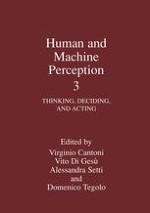2001 | OriginalPaper | Buchkapitel
Time-Effective Detection of Objects of Interest in Images by Means of A Visual Attention Mechanism
verfasst von : Roman M. Palenichka, Peter Zinterhof
Erschienen in: Human and Machine Perception 3
Verlag: Springer US
Enthalten in: Professional Book Archive
Aktivieren Sie unsere intelligente Suche, um passende Fachinhalte oder Patente zu finden.
Wählen Sie Textabschnitte aus um mit Künstlicher Intelligenz passenden Patente zu finden. powered by
Markieren Sie Textabschnitte, um KI-gestützt weitere passende Inhalte zu finden. powered by
Time-effective detection and recognition of objects of interest in images is still a matter of intensive research in computer vision community because the artificial vision systems fail to outperform the detection results by a human being. The detection problem is complicated when objects of interest have low contrast and various sizes or orientations and can be located on noisy and inhomogeneous background with occlusion occurrences. In many practical applications, the real-time implementation of object detection algorithms in such conditions is a matter of great concern. The results of numerous neurological and psychophysical investigation of human visual system (HVS) indicate that the human vision can successfully cope with these complex situations because of using the visual attention mechanism associated with a model-based image analysis.1,2 The goal of the investigation presented here was not the simulation of human visual perception but the incorporation of its advantageous features into computer vision algorithms. Besides many remarkable properties of HVS like the mentioned model-based visual attention, the HVS has also some disadvantages while detecting and identifying objects. For instance, it is prone to illusions that should be not automatically copied onto an artificial vision system.3
